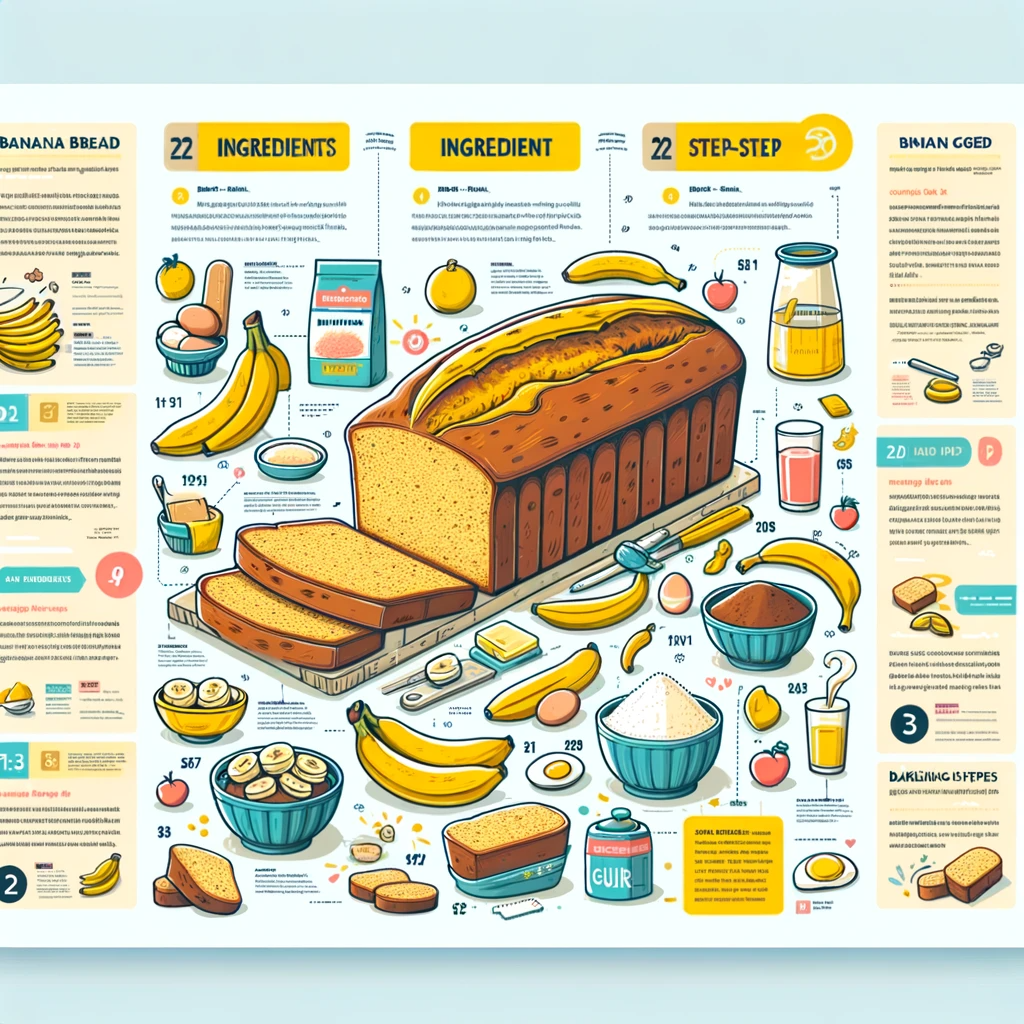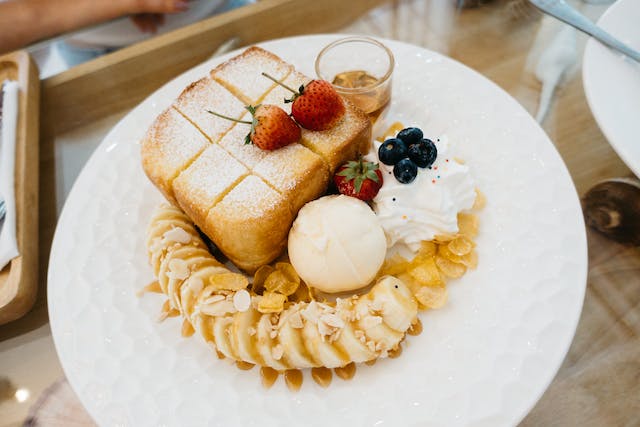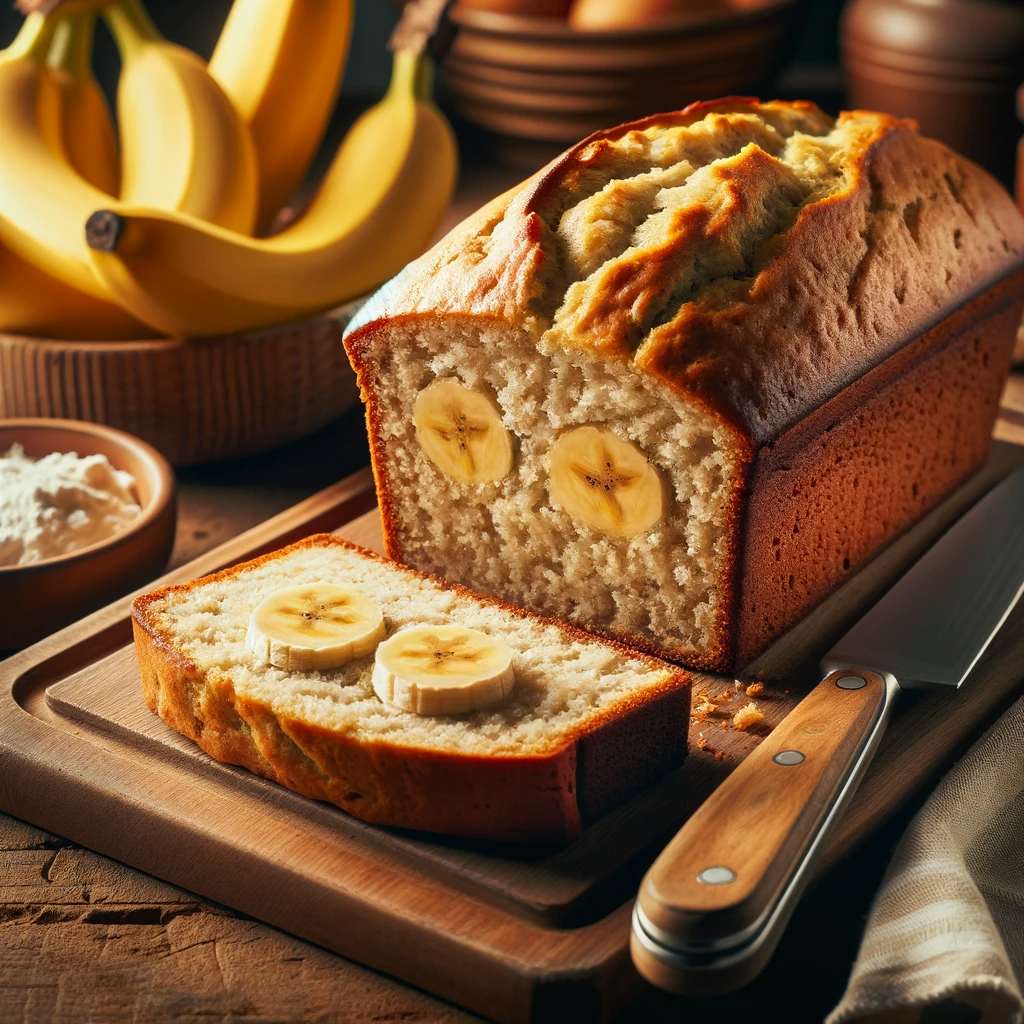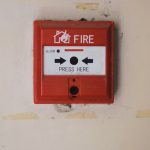My earliest memories of baking involve the sweet, comforting aroma of banana bread wafting through our family kitchen. This simple yet delightful treat, with its humble origins, has risen to become a beloved staple in many households. Notably, during World War II, banana bread recipe gained popularity in the United States due to the need for resourceful baking, using overripe bananas and a simple mix of ingredients.
Contents
Importance
Banana bread holds a special place in the world of baked goods for its simplicity, versatility, and the way it brings together flavors and memories. It’s not just a recipe; it’s a canvas for creativity. Whether enjoyed as a breakfast item, a snack, or a dessert, banana bread’s adaptability makes it a favorite. Its moist, sweet flavor, often enhanced with nuts or chocolate chips, appeals to a wide range of palates.
Preview
In this article, we’ll delve into a tried-and-true homemade banana bread recipe that promises to be both delicious and easy to make. Alongside the recipe, we’ll share essential tips for perfecting your banana bread, such as choosing the right bananas and customizing the recipe to suit your taste. Whether you’re a seasoned baker or trying your hand at baking for the first time, this guide will help you create a banana bread that’s sure to be a hit.
History and Background
Origins: The story of banana bread begins with the popularization of bananas in the United States in the late 19th century, but it was not until the 1930s that banana bread became a widespread phenomenon. This rise coincided with two key developments: the introduction of baking powder and baking soda into the American pantry, and the Great Depression, when resourceful housewives sought to use overripe bananas rather than throwing them away. The earliest official recipe for banana bread was published in Pillsbury’s 1933 Balanced Recipes cookbook, marking the beginning of its journey into the heart of American baking culture.
Cultural Significance: Banana bread has transcended its American roots, evolving into various forms around the world. In Brazil, banana bread, known as ‘pão de banana’, often includes raisins and cinnamon, adding a unique twist to the traditional recipe. In Jamaica, ‘banana bread’ takes on a more cake-like form and is a popular item in cafes and bakeries. In Australia and the UK, banana bread is often a staple in coffee shops, sometimes toasted and served with butter or cream cheese. Each variation reflects local tastes and available ingredients, showcasing the adaptability and universal appeal of this humble bread.
The story of banana bread is not just one of culinary evolution, but also a tale of how a simple recipe can adapt and thrive in different cultures. Whether it’s the classic American loaf or a spiced Jamaican version, banana bread has become a symbol of comfort and creativity in kitchens around the world.
Ingredients and Substitutes
List of Ingredients:
- All-purpose flour – 2 cups
- Baking soda – 1 teaspoon
- Salt – 1/4 teaspoon
- Butter – 1/2 cup (unsalted, at room temperature)
- Brown sugar – 3/4 cup (packed)
- Eggs – 2 large
- Overripe bananas – 3 to 4 (mashed, approximately 1 1/2 cups)
- Vanilla extract – 1 teaspoon
- Optional: Walnuts or chocolate chips – 1/2 cup
Substitutes:
- Flour: For a gluten-free version, use a gluten-free all-purpose flour mix.
- Butter: For a vegan option, use coconut oil or a plant-based butter.
- Sugar: Coconut sugar can be a healthier alternative.
- Eggs: To make it vegan, use flax eggs (1 flax egg = 1 tablespoon ground flaxseed + 3 tablespoons water, let sit for 15 minutes).
- Overripe bananas: These are essential for moisture and sweetness. If short on bananas, applesauce can be used to supplement the required quantity.
- Vanilla extract: Almond extract can be used for a different flavor profile.
- Add-ins: For nut allergies, omit walnuts or replace with seeds like pumpkin or sunflower. For chocolate chips, use dairy-free versions for a vegan recipe.
These substitutes ensure that the banana bread can be enjoyed by those with dietary restrictions, without compromising on the taste and texture of this classic treat.
Step-by-Step Banana Bread Recipe
Preparation:
- Preheat your oven to 350°F (175°C).
- Grease a 9×5 inch loaf pan with butter or non-stick spray. For easier removal of the bread, you can also line the bottom of the pan with parchment paper.
Mixing Ingredients:
- In a medium bowl, whisk together the all-purpose flour, baking soda, and salt. Set this dry mixture aside.
- In a large bowl, use an electric mixer to cream the butter and brown sugar together until light and fluffy.
- Beat in the eggs, one at a time, into the butter and sugar mixture, ensuring each is well incorporated before adding the next.
- Stir in the mashed bananas and vanilla extract, mixing until well combined.
- Gradually add the dry ingredients to the wet mixture, stirring just until the flour is incorporated. Avoid overmixing.
- If using, fold in walnuts or chocolate chips.
- Pour the batter into the prepared loaf pan, smoothing the top with a spatula.
Baking:
- Bake in the preheated oven for 60-65 minutes. The bread is done when a toothpick or knife inserted into the center comes out clean, and the top is golden brown.
- If the bread is browning too quickly, you can loosely cover the top with aluminum foil halfway through baking.
Cooling and Serving:
- Once baked, remove the bread from the oven and let it cool in the pan for about 10 minutes.
- After 10 minutes, remove the bread from the pan and let it cool completely on a wire rack.
- For best flavor and texture, let the bread rest for a few hours before slicing.
- Serve as is, or toast slices and serve with butter, cream cheese, or your favorite spread.
Banana bread is best enjoyed fresh, but it can also be wrapped in plastic wrap or stored in an airtight container to keep it moist. It can be stored at room temperature for several days or frozen for longer storage.
Tips and Tricks
Ripe Bananas:
The key to excellent banana bread is using overripe bananas. Look for bananas that are heavily speckled or even black. Overripe bananas are softer and sweeter, which greatly enhances the bread’s flavor and texture.
If your bananas aren’t ripe enough, you can speed up the ripening process by baking unpeeled bananas on a baking sheet at 300°F (150°C) for about 15-20 minutes, or until the skins become black.
Variations:
Banana bread is versatile. Consider adding nuts like walnuts or pecans for a crunchy texture, or stir in chocolate chips for a sweet twist. You can also experiment with dried fruit, such as raisins or cranberries.
For a healthier version, try incorporating whole wheat flour for half of the all-purpose flour, or add a tablespoon of flaxseed for added fiber.
Spices like cinnamon, nutmeg, or cardamom can be added to the batter for extra flavor.
Storage:
To keep banana bread moist, wrap it in plastic wrap or aluminum foil, or store it in an airtight container. It can stay fresh at room temperature for about 3-4 days.
For longer storage, banana bread freezes well. Wrap the loaf or individual slices in plastic wrap, then place them in a freezer bag. It can be frozen for up to 3 months.
To thaw, leave it at room temperature for a few hours or overnight. You can also thaw slices in the microwave for a quick snack.
These tips and tricks will help you customize your banana bread to your taste and ensure it stays deliciously moist and flavorful, whether enjoyed right away or saved for later.
Nutritional Information
Health Benefits:
Banana bread, made primarily from bananas, offers several nutritional benefits. Bananas are a good source of essential vitamins and minerals, including potassium, vitamin C, vitamin B6, and fiber. These nutrients contribute to heart health, digestive health, and overall energy levels.
When made with whole grain flour, banana bread can provide a healthy dose of dietary fiber, which is beneficial for digestive health and can help in maintaining a healthy weight.
Including nuts like walnuts adds healthy fats, protein, and additional fiber, enhancing the nutritional value of the bread.
Caloric Content:
The caloric content of homemade banana bread can vary depending on the ingredients used. On average, a slice of banana bread made from a standard recipe (including butter, sugar, and all-purpose flour) contains approximately 200 to 250 calories.
If you add nuts or chocolate chips, the calorie count will increase, typically by about 30-50 calories per slice, depending on the amount and type of add-ins.
For a lower-calorie version, you can substitute some of the sugar with a natural sweetener like apple sauce, use less butter or replace it with a healthier oil like coconut oil, and opt for whole grain flour instead of all-purpose flour.
It’s important to note that while banana bread can be part of a healthy diet, it should be enjoyed in moderation due to its sugar and fat content, especially if it’s made with refined flour and added sugars.
Interviews on the banana bread recipe
Conducting interviews on banana bread recipes can provide a wealth of diverse perspectives, tips, and personal touches that people add to their recipes. Here’s a guide on how you might approach these interviews:
Interview Structure
Introduction:
Introduce yourself and explain the purpose of the interview.
Build a rapport with the interviewee by sharing your own experiences or interest in banana bread.
Personal Connection:
Ask about their first experience with banana bread.
Inquire about any family traditions or memories associated with banana bread.
Recipe Origins:
Discuss where they got their banana bread recipe.
Ask if the recipe is a family heirloom, a personal creation, or adapted from another source.
Unique Ingredients or Techniques:
Inquire about any special ingredients they use in their recipe.
Ask about unique techniques they might employ in preparing or baking.
Cultural Significance:
Explore any cultural influences on their recipe.
Ask if they incorporate elements from their heritage or local traditions.
Variations and Experimentation:
Discuss any variations they’ve tried or prefer.
Ask about any experimental ingredients or methods they’ve tested.
Tips and Tricks:
Request their top tips for perfect banana bread.
Inquire about common mistakes to avoid.
Health and Dietary Adjustments:
Explore any modifications they make for dietary restrictions (e.g., gluten-free, vegan).
Discuss how they balance taste and nutrition.
Sharing and Community:
Ask about their experiences sharing their banana bread with others.
Inquire if they have any stories related to community or family gatherings involving their banana bread.
Closing:
Thank them for their time and insights.
Ask if they’d like to share anything else or have any final thoughts.
Conducting the Interview
Be Respectful: Respect their time and be attentive to their stories.
Record (with Permission): If you’re planning to use the information for a publication, always ask for permission to record.
Take Notes: Jot down key points, especially unique recipes or techniques.
Follow-Up Questions: Be prepared to ask follow-up questions based on their responses to delve deeper into interesting points.
After the Interview
Transcribe and Analyze: Transcribe the interview if recorded and analyze the information.
Follow Up: If necessary, follow up with the interviewee for clarifications.
Acknowledge Contributions: In your final piece, acknowledge the contributions of your interviewees.
These interviews can provide a rich, multi-faceted view of banana bread recipes and their significance, adding depth and personal touch to your understanding and presentation of the subject.
Quotes on the banana bread recipe
Creating quotes about banana bread recipes can capture the essence, joy, and individual experiences people have with this beloved treat. Here are some fictional quotes that encapsulate different perspectives:
The Home Baker: “Banana bread is more than just a recipe; it’s a canvas for my culinary creativity. Each loaf tells a story of the ingredients I had on hand, the people I’m baking for, and the memories we’re creating.”
The Professional Chef: “In every slice of banana bread, there’s a balance of flavors that speaks to both comfort and sophistication. It’s a humble masterpiece that can transform the simplest ingredients into something truly extraordinary.”
The Health Enthusiast: “Banana bread is my go-to for a guilt-free treat. I love experimenting with ingredients like almond flour and natural sweeteners. It’s amazing how something so delicious can also be good for you.”
The Family Tradition Keeper: “This banana bread recipe has been in my family for generations. Each bite is filled with not just flavors, but also the laughter and love of countless family gatherings.”
The Culinary Innovator: “I see banana bread as a blank slate for innovation. Whether it’s adding matcha for a unique twist or experimenting with vegan substitutes, there’s always a new way to reinvent this classic.”
The Comfort Seeker: “There’s nothing more comforting than the smell of banana bread baking in the oven. It’s like a warm hug from the inside, a true embodiment of home and hearth.”
The Sustainable Cook: “Banana bread is my favorite way to minimize food waste. Using overripe bananas that would otherwise be thrown out feels like a small, delicious victory for sustainability.”
The Social Baker: “Whenever I bake banana bread, I know I’ll be making twice as much: one for my family and another for sharing with neighbors. It’s my way of spreading joy and sweetness in the community.”
The Childhood Memory Holder: “Every time I bake banana bread, I’m transported back to my childhood, standing on a stool in my grandma’s kitchen, eagerly waiting for the bread to come out of the oven.”
The Experimental Cook: “Banana bread is my playground. From savory versions with cheese and herbs to sweet delights with chocolate and berries, it’s always exciting to see what new flavors I can create.”
These quotes reflect the diverse appeal of banana bread, showcasing its role not just as a culinary item, but as a vessel for memories, creativity, health, and community bonding.
Expert Opinion on Banana Bread Recipe
As an expert in culinary arts and baking, my opinion on banana bread recipes centers on their versatility, the importance of ingredient quality, and the role of technique in achieving the perfect loaf.
Versatility and Adaptability: Banana bread is incredibly versatile. It’s a recipe that welcomes experimentation. You can adapt it to various dietary needs and preferences, making it an excellent option for anyone from the health-conscious baker to someone indulging in a sweet treat. Its simplicity allows for additions like nuts, fruits, or chocolate chips, and it can be easily modified to suit vegan or gluten-free diets.
Importance of Ingredient Quality: The quality of ingredients plays a crucial role in the outcome of the bread. Overripe bananas are key; they provide not only the distinct banana flavor but also natural sweetness and moisture. Using quality flour, fresh baking soda, and good fats like real butter or high-grade plant oils can make a significant difference in texture and taste.
Technique Matters: The method of mixing and baking is just as important as the ingredients. Overmixing the batter can lead to a dense loaf, while undermixing might result in an uneven texture. The creaming of butter and sugar, if used, should be done until light and fluffy to incorporate air and ensure a tender crumb. Baking at the right temperature is crucial to achieve a golden crust without drying out the interior.
Personalization is Key: The beauty of banana bread lies in its ability to be personalized. Whether it’s adding spices like cinnamon for warmth, vanilla for depth, or incorporating whole grains for a nuttier flavor and healthier profile, each baker can make it their own.
Nutritional Aspect: Banana bread can be a nutritious option, especially when made with whole wheat flour, reduced sugar, and healthy fats. Incorporating ingredients like flaxseeds, oats, or nuts can boost its nutritional value.
Banana bread recipe is much more than a simple baked good; it’s a reflection of the baker’s preferences, creativity, and even their cultural background. Its ease of preparation makes it an excellent starting point for novice bakers, while its adaptability offers endless opportunities for those more experienced in the kitchen.
Examples of banana bread recipe
Here are two examples of banana bread recipes that cater to different tastes and dietary preferences. The first is a classic banana bread recipe, and the second is a vegan and gluten-free alternative.
Classic Banana Bread Recipe
Ingredients:
- 1 ¾ cups all-purpose flour
- 1 teaspoon baking soda
- ¼ teaspoon salt
- ½ cup unsalted butter, softened
- 1 cup granulated sugar
- 2 large eggs
- 1 ½ cups mashed ripe bananas (about 3-4 bananas)
- 2 tablespoons milk
- 1 teaspoon vanilla extract
- ½ cup chopped walnuts or pecans (optional)
Instructions:
- Preheat your oven to 350°F (175°C) and grease a 9×5 inch loaf pan.
- In a small bowl, whisk together the flour, baking soda, and salt.
- In a large bowl, cream the butter and sugar together until light and fluffy. Beat in the eggs, one at a time.
- Stir in the mashed bananas, milk, and vanilla extract.
- Gradually add the dry ingredients, mixing just until combined. Fold in nuts if using.
- Pour the batter into the prepared loaf pan and bake for 60-65 minutes or until a toothpick inserted into the center comes out clean.
- Let cool in the pan for 10 minutes, then transfer to a wire rack to cool completely.
Vegan and Gluten-Free Banana Bread Recipe
Ingredients:
- 2 cups gluten-free all-purpose flour
- 1 teaspoon baking powder
- ½ teaspoon baking soda
- ½ teaspoon salt
- ½ cup coconut oil, melted
- ¾ cup maple syrup or agave nectar
- 2 flax eggs (2 tablespoons ground flaxseed + 6 tablespoons water, mixed and set for 15 minutes)
- 1 ½ cups mashed ripe bananas (about 3-4 bananas)
- 1 teaspoon vanilla extract
- ½ cup dairy-free chocolate chips or chopped nuts (optional)
Instructions:
- Preheat your oven to 350°F (175°C) and line a 9×5 inch loaf pan with parchment paper.
- In a bowl, mix together the gluten-free flour, baking powder, baking soda, and salt.
- In another bowl, whisk together the melted coconut oil and maple syrup.
- Add the flax eggs, mashed bananas, and vanilla extract to the wet ingredients, mixing well.
- Gradually add the dry ingredients to the wet, stirring until just combined. Fold in chocolate chips or nuts if using.
- Pour the batter into the prepared pan and bake for 60-70 minutes, or until a toothpick comes out clean.
- Allow to cool in the pan for 15 minutes, then transfer to a wire rack to cool completely.
Both recipes offer a delightful taste of banana bread, each catering to different dietary needs, but equally enjoyable in their own right!
An Infographic for Banana Bread Recipe

Here is an infographic illustrating a banana bread recipe. It includes colorful and visually appealing illustrations of bananas, a loaf of banana bread, and various ingredients. The infographic is divided into sections for ingredients, step-by-step instructions, and baking tips, designed to be clear and easy to follow, especially for beginner bakers.
Conclusion
Summary:
In this article, we’ve explored the delightful world of banana bread, a beloved treat cherished in households and bakeries globally. We began with its intriguing history, tracing back to the Great Depression era, and recognized its cultural significance across different countries. The recipe provided was a classic rendition, emphasizing the importance of overripe bananas for the best flavor and moisture. We also discussed a vegan and gluten-free alternative, showcasing banana bread’s versatility and adaptability to various dietary preferences.
Further, we delved into the step-by-step process of making banana bread, from preparation to baking and serving, ensuring even a novice baker can achieve a delicious outcome. The article also offered practical tips and tricks for perfecting the recipe, including suggestions for ingredient substitutions and creative variations. Lastly, we addressed the nutritional aspects, highlighting banana bread’s health benefits and providing a general idea of its caloric content.
Call to Action:
Now that you’re equipped with the knowledge, a classic recipe, and a vegan, gluten-free alternative, it’s your turn to bring the warm, comforting aroma of banana bread into your kitchen. We encourage you to try the recipe, experiment with your own twists, and share your experiences. Whether it’s a family gathering or a quiet morning treat, banana bread is sure to bring joy and deliciousness to your table. Don’t forget to share your creations, modifications, and the memories you make along the way. Happy baking!

Frequently Asked Questions (FAQs) About Banana Bread Recipe
Can I use unripe bananas for banana bread?
Ideally, banana bread is best with overripe bananas as they are sweeter and mash easily. Unripe bananas lack the sweetness and moisture that gives banana bread its characteristic flavor and texture.
How can I quickly ripen bananas for banana bread?
To ripen bananas quickly, place them in a brown paper bag and fold the top over. The ethylene gas produced by the bananas will be trapped and speed up the ripening process. You can also bake unpeeled bananas in the oven at 300°F for about 15-20 minutes until they become soft and blackened.
Why did my banana bread come out dense?
Dense banana bread can result from over mixing the batter, which develops the gluten too much. Also, using insufficient leavening agents (like baking soda) or using old baking soda that has lost its potency can cause this issue.
Can I make banana bread without eggs?
Yes, you can use egg substitutes like flax eggs, mashed bananas, applesauce, or commercial egg replacers in your banana bread recipe to make it egg-free.
How can I make my banana bread moister?
To ensure moist banana bread, use plenty of mashed bananas, don’t overmix the batter, and don’t overbake. You can also add a small amount of yogurt, sour cream, or buttermilk to the recipe.
Is banana bread healthy?
Banana bread can be a healthy option, especially when made with whole grain flours, reduced sugar, and healthy fats. However, traditional recipes with refined flour and sugar are more indulgent.
Can banana bread be frozen?
Yes, banana bread freezes well. Wrap it tightly in plastic wrap and then in aluminum foil or a freezer bag. It can be frozen for up to 3 months.
How long does banana bread last?
Banana bread can last up to 1 week at room temperature or in the refrigerator. Ensure it’s wrapped or stored in an airtight container to maintain freshness.
Can I add other fruits or nuts to my banana bread?
Absolutely! You can customize your banana bread with additions like nuts, chocolate chips, dried fruits, or spices like cinnamon or nutmeg.
What’s the best way to mash bananas for banana bread?
The easiest way to mash bananas is using a fork or potato masher. If the bananas are sufficiently ripe, they should mash easily into a smooth consistency.
These FAQs cover a wide range of common inquiries, offering solutions and tips to ensure successful banana bread baking experiences.







